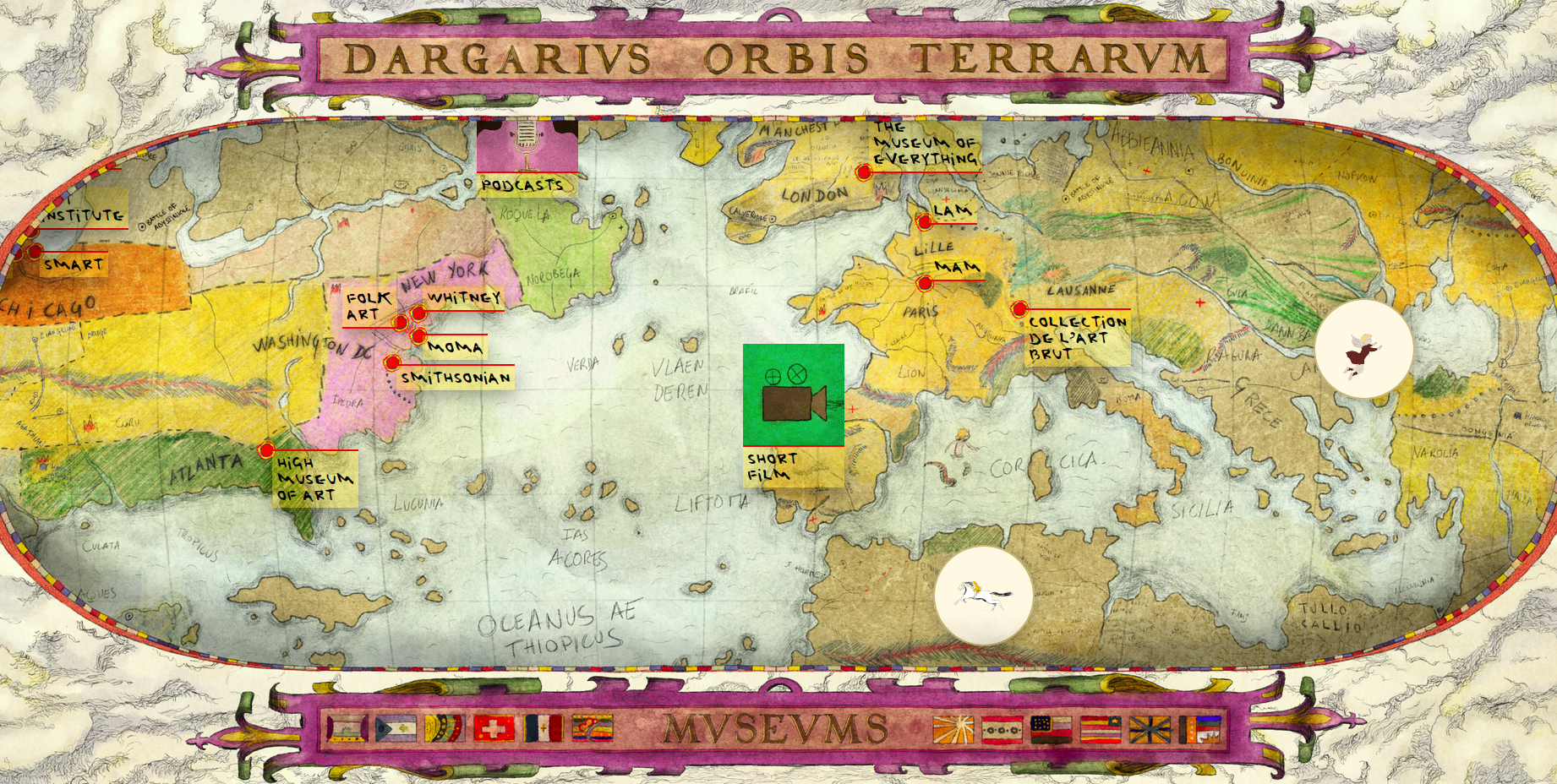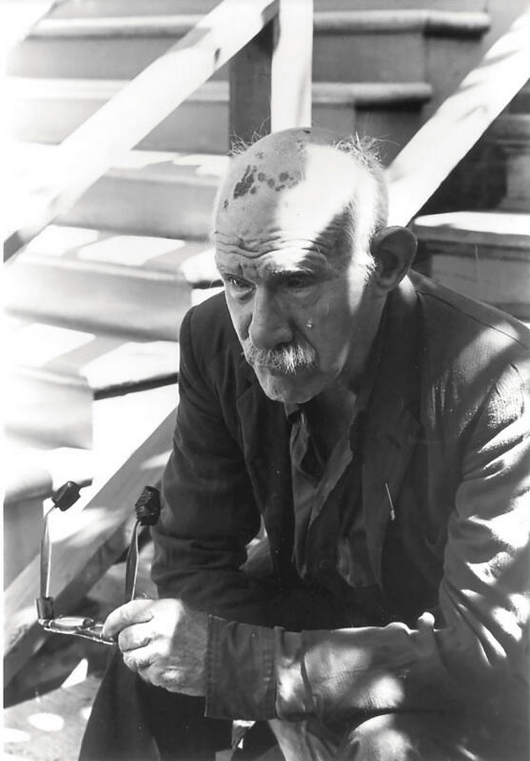Henry Darger: the posthumous fate of an extraordinary œuvre
[02 Jan 2024]Fifty years ago, Henry Darger died alone, poor and unknown, but today he is one of the most famous and highly regarded artists in ‘Outsider Art’.
Although the term was used by André Breton in the 1920s, the expression “art brut” (which subsequently became known as Outsider Art in English) was essentially popularized by the French artist Jean Dubuffet in 1945. The term had the impact of ‘elevating’ to the rank of ‘artistic creations’ works that hitherto were only perceived as manifestations of psychological disorders or works created by artists whose profound individual introspection kept them outside any of the artistic movements or social conformisms of their times. The term Outsider Art (also known as ‘art singulier’ in French) therefore encompasses the creations of artists who remain (or remained) disconnected from the official art world, or any network or recognised framework.
Initially excluded from the cultural field, such works obtained formal recognition in Paris in 1967 with a first exhibition of Art Brut at the city’s Museum of Decorative Arts. Nine years later, the Collection de l’Art Brut was inaugurated in the Swiss town of Lausanne. But it is only since the beginning of the millennium that these creations – which were never intended to be commercialized – have been the subject of significant auction sales, successful specialized art fairs, and enthusiastic bidding from collectors looking for authenticity.
The appeal of works by self-taught and totally independent creators would appear to stem from a combination of their relative artistic freedom and their individual stories which, beyond the works themselves, are often fascinating to art enthusiasts and collectors. Henry DARGER (and his work) is a perfect example of this combined fascination. Before his death in 1973, hardly anyone knew that this solitary man was an immense artist.

Henry Darger in collections around the world (source: outsideronline.co site)
A life of solitude – and a colossal epic
Born in a poor neighborhood in Chicago in 1892, Henry Darger was placed in a home by his father after the death of his mother, and then in an institution for the mentally handicapped in Lincoln IL (where it was alleged children were regularly mistreated and even tortured) from which he escaped at the age of seventeen. He reached Chicago on foot and found work as a dishwasher and cleaner in the city’s hospitals. After work, he returned to his lodgings and avoiding all social interactions, living a reclusive life dedicated to the incredible saga he wrote in secret, a complex and obsessive fantasy ranging from fairy tale refinement to the bloodiest cruelty.

Henry Darger in Chicago Illinois circa 1970
In 1972, Henry Darger left his apartment to be admitted to a hospice. It is there that his landlord, Nathan Lerner, discovered the world of the solitary artis: an autobiography of two thousand pages and a literary work of more than fifteen thousand pages entitled The Story of the Vivian Girls, in What is known as the Realms of the Unreal, of the Glandeco-Angelinnian War Storm, Caused by the Child Slave Rebellion . In fact, Darger had spent 42 years creating an incredibly dense treasure involving invented nations and languages, races and geographies.
To illustrate his fiction, he produced several hundred watercolors featuring heroines with baby faces, charming children copied from magazines then staged in bucolic or cruel situations, including horrific scenes of torture between the heroic Vivian Girls and the bloodthirsty Glandelinians.
Isolation, mental health problems, trauma (including that of the First World War for which he was enlisted in the American army in 1917), Darger incorporated personal elements into his work including, perhaps, his wish to save abused children. But he went far beyond the vicissitudes of his autobiography by delivering one of the most imaginative and singular works of the 20th century.
Geographic distribution of Darger’s turnovat auction (copyright Artprice.com)

A de-marginalized market
When Nathan Lerner asked Darger what he should do with his “find”, he didn’t get a precise answer. For the dying artist, it was too late. Lerner decided to keep everything after Darger’s death (April 1973) and offered drawings to a few professionals in the American art world over the following 20 years. When Nathan Lerner died in 1997, his widow Kiyoko donated numerous works to the Collection de l’Art Brut in Lausanne (Switzerland), to the MoMA, and to the Museum of Modern Art in Paris. Darger’s work began to be exhibited around the world and some art historians described it as one of the greatest examples of Outsider Art.
By the end of the 1980s, the drawings that Nathan Lerner sold for around $1,000 each in the 1970s were worth around $10,000. They began to reach significant prices in the early 2010s when Christie’s began to take a greater interest in Darger’s work. After the Museum of Modern Art in Paris received an exceptional donation from the artist’s estate, several of Darger’s works fetched sums above $100,000 at Christie’s Paris in 2013.
The artist’s prices have also integrated strong growth of the Outsider Art market in the early 2010s. At the time, Outsider creators began to be seriously collected by the most prestigious museums and their works found their way into international exhibitions, notably the Venice Biennale in 2013. thereafter, Darger’s large drawings – some measuring over two or three meters long – began to change hands at prices exceeding $500,000, with Christie’s Paris hammering an auction record of $750,000 in 2014 for a double-sided composition measuring 3.3 meters long (Sans titre).

Henry Darger, Untitled, detail of the work sold for $750,000 at Christie’s Paris in 2014
Cultural professionals in the public and private spheres have worked to liberate Outsider Art from its original shackles by integrating it into the art world’s mainstream. No longer marginalized, today this highly singular branch of artistic expression has a new place in art history, although it is still relatively rarely shown in exhibitions and Contemporary art fairs. But several signs would appear to suggest that the last barriers are gradually disappearing: certain international galleries are starting to open their galleries to these Outside creations (including David Zwirner, who is in charge of the estate of Bill Traylor), and increasing numbers of major collectors are visiting the Outsider Art fairs in New York and Paris. In addition we note that the profile of Outsider Art buyers is changing. It is no longer limited to the small initial circle of exclusively Outsider Art collectors. In short, Outsider Art is clearly emerging from the margins to integrate leading American and European collections, but despite the expansion of this market, the most valued works of Outsider Art are still changing hands (and perhaps always will) at much lower prices than the most expensive works on the art market.




 0
0
